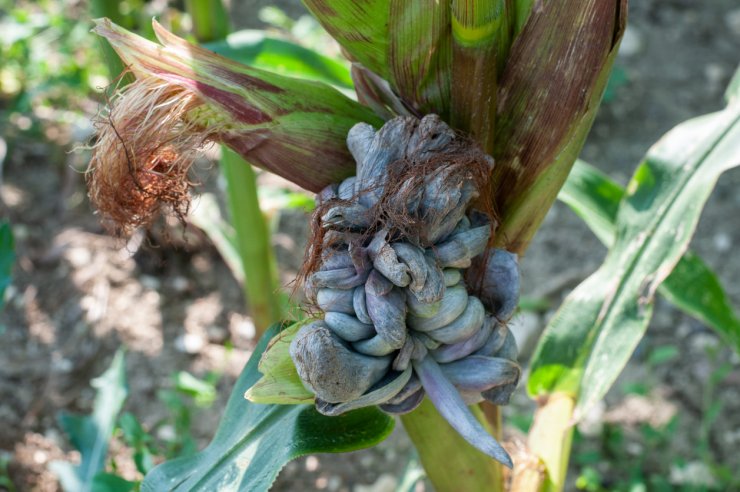
Corn Smut
Sweet corn grown in home gardens is relatively free of disease; pests are another story. Whether your corn plants are bothered by disease or pests, the best way to fight them is by taking quick action, or better yet, prevention.
Corn diseases can affect the leaves, stalks, and roots. Here is what to look for to spot possible infection:
Corn leaves—possible disease symptoms:
- Rusty spots
- Pale spots or mottled foliage
- Light tan to brown spots
Corn roots and stalks—possible disease symptoms:
- Softness or mushiness
- Fallen stalks
Corn Smut
Corn smut is easy to spot in the garden. It consists of fleshy galls or swells containing greyish-white to black sooty masses of spores that release into the air when opened. Smut can grow on any part of the corn plant. To treat, cut off galls before they open and, if necessary, destroy the affected plants. Smut spores can remain viable in the soil for five to seven years, so it’s important to keep them from spreading.
Most corn plant diseases can be avoided or limited if you:
Select certified seeds. Purchase seeds or seedlings that have been treated or designed for disease resistance.
Plant in warm soil. Make sure the soil is at least 60 degrees (F) before planting, to avoid seedling rot.
Improve your soil composition. Before planting your corn, add a good amount of compost or organic matter to improve the soil. Extra nutrients and good aeration help grow stronger plants that will resist disease and infection.
Weed and water. Keep the garden free of weeds, which can harbor viruses. And make sure your plants properly watered, as drought causes stress that leaves plants susceptible to disease.
Examine Daily. Check your corn plants every day, to be sure no disease symptoms are present or emerging.
Spot Diseases Early. Catch diseases and treat them quickly, so your plants can recover and thrive.
Clean Up and Destroy Infected Plants. Remove plant debris after harvesting to reduce diseases caused by rust and corn smut. Throw away or burn infected plants. Don’t keep infected plants over the winter in your garden, and don’t throw them on your compost pile. Disease-ridden plants, even when dead, will spread the disease to other plants or even your soil.
Have you ever lost corn plants to pests or diseases? Have your plants suffered from corn smut? Please share your tips for growing healthy corn plants.


 Previous
Previous

